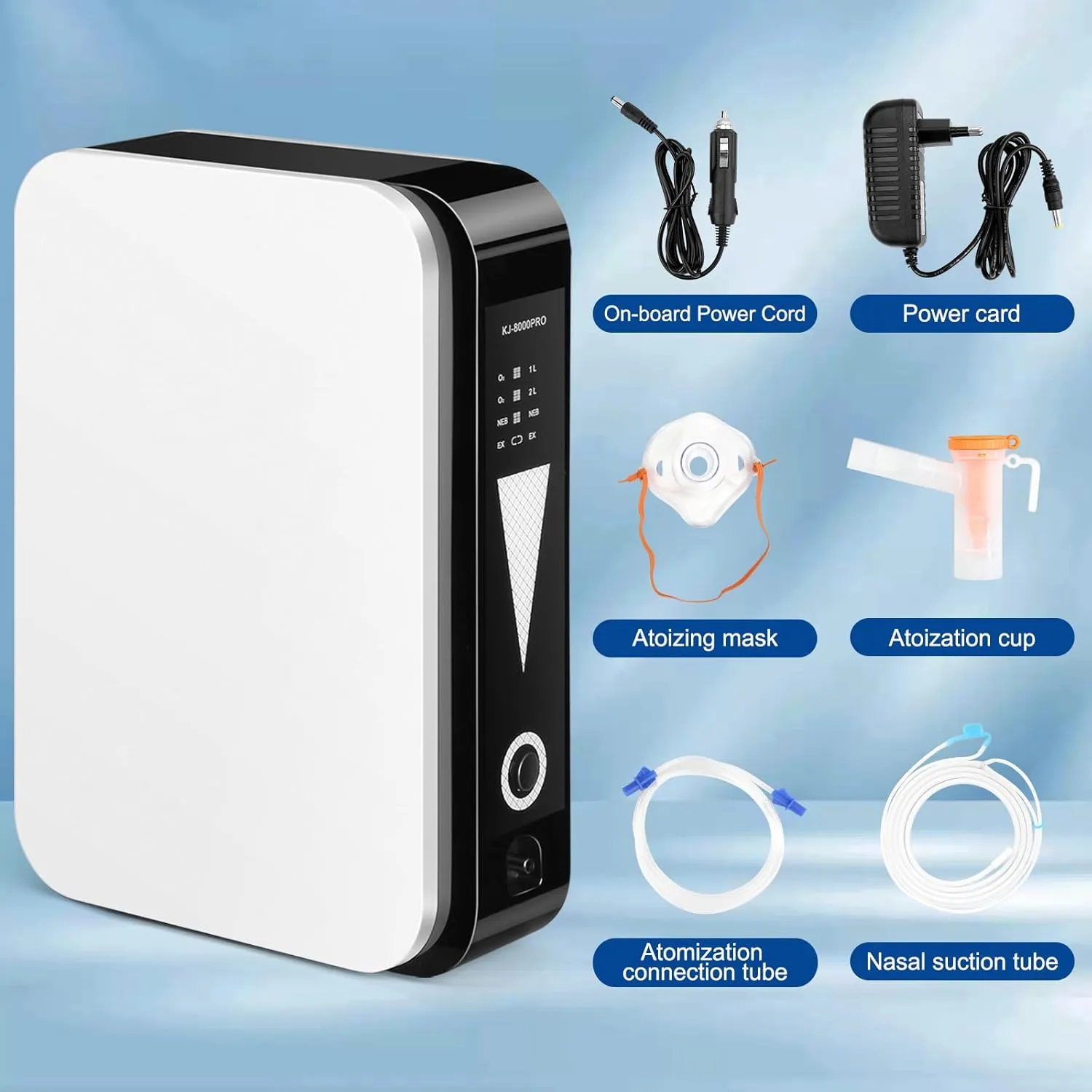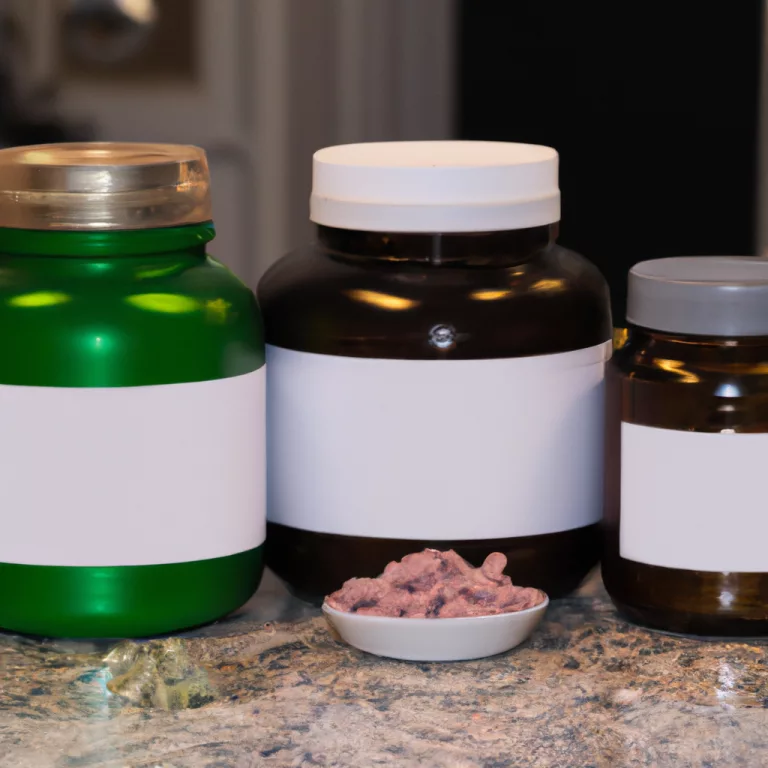Unveiling the Healing Power of Hyperbaric Oxygen Therapy: Our Comprehensive Guide
Key Points
- Hyperbaric oxygen therapy (HBOT) utilizes pressurized pure oxygen to increase the amount of oxygen dissolved in the body significantly. This environmental change enhances tissue restoration and accelerates the immune response.
- The therapy utilizes specialized chambers designed for safety and efficacy, providing higher oxygen concentrations and pressures than standard oxygen treatments, making it effective for conditions such as chronic wounds and certain infections.
- Scientific research and clinical studies continue to support the role of hyperbaric oxygen therapy (HBOT) in accelerating healing and reducing inflammation. It further encourages the development of new blood vessels, which is crucial for patients suffering from non-healing wounds or limb-threatening infections.
- HBOT is approved for minimal medical uses, such as the treatment of carbon monoxide poisoning and decompression sickness. It remains crucial to adhere to medical practice standards and consult qualified healthcare providers for safe and proper use.
- With advances in technology and ongoing research, the potential of hyperbaric oxygen therapy (HBOT) continues to expand. There are emerging applications for brain health, sports recovery, and adjunctive cancer care. Further studies are necessary to verify long-term advantages.
- Patients considering hyperbaric oxygen therapy (HBOT) should undergo a thorough evaluation, understand the risks and benefits, follow prescribed protocols, and maintain open communication with their healthcare team for the safest and most effective outcomes.
No products found.
Hyperbaric oxygen therapy enhances the body’s natural healing process and helps to combat infection with 100% oxygen.
It occurs in a pressurized room or chamber. Individuals receive this treatment for non-healing wounds, carbon monoxide poisoning, and certain types of infections.
The procedure increases the level of oxygen your blood can transport, which aids in healing damaged tissue and reducing inflammation.
Clinics and hospitals use pressure greater than that of normal air to maximize the effects of the treatment. Medical teams monitor patients throughout each session to ensure safety.
It’s why some athletes and people with chronic pain seek out the treatment.
For many of these uses, medical groups are adamant that more research is needed. In the next section, learn how this therapy works, what happens during a session, and what to expect from the results.
What is Hyperbaric Oxygen Therapy?
In this treatment, patients inhale 100% oxygen in a pressurized chamber that exceeds typical atmospheric pressure. These special rooms or tubes are designed to create an environment that facilitates extraordinary healing.
They usually function between two and three times the atmospheric pressure at sea level.
This heightened pressure intensifies the level of oxygen that can become saturated in the body’s blood and tissue. It increases the body’s ability to fight infections, accelerates healing, and restores function to damaged tissue.
Unlike standard oxygen therapy, HBOT’s distinct environment and use of 100% oxygen set it apart, making it a tool for specific, sometimes severe, health issues.
1. Pressurized Oxygen: The Core Idea
When you breathe oxygen in under pressure, your lungs absorb a significantly higher amount compared to regular air.
This allows for much more oxygen to enter your blood, increasing levels in other tissues, including those with limited blood supply.
This is particularly significant for wounds that refuse to heal or tissues damaged by trauma.
This increased pressure allows oxygen to permeate into all of the body’s cells, assisting in healing and even combating bacteria.
For instance, individuals with diabetic foot ulcers or burns have improved healing. Their bodies get the oxygen they need, exactly where they need it most.
2. Pure Oxygen’s Vital Role
That’s because breathing 100% oxygen is essential for HBOT to work its healing magic. This exceptional degree of purity and concentration is what makes your body’s cells create energy and heal themselves so efficiently.
It makes treatments safer and more effective because it eliminates the presence of other gases.
For patients with carbon monoxide poisoning, the use of pure oxygen accelerates recovery and can help prevent damage to key organs.
In cancer treatment, this is because it can enhance the effectiveness of other therapies.
3. Understanding Chamber Mechanics
HBOT chambers come in two main types: single-person (monoplace) and multi-person (multiplace). Both rely on air compressors to increase pressure and maintain high oxygen concentrations.
Safety is built into this chamber, featuring alarms, pressure gauges, and pressure monitoring systems that enable staff to monitor patients visually.
Sessions typically range from 1.5 to 2 hours, frequently repeated over days or weeks.
4. HBOT vs. Regular Oxygen
While everyone finds relief from standardized oxygen therapy, this method fails to achieve the same elevated blood oxygen levels as hyperbaric oxygen therapy (HBOT).
In complex cases, such as gas gangrene or decompression sickness, HBOT is more effective, both faster and deeper.
It is especially effective in cases where regular air or oxygen masks are unable to provide relief.
This includes instances such as severe wounds, infections, or certain types of cancer.
No products found.
The Science: How HBOT Works Wonders
Hyperbaric oxygen therapy, or HBOT, goes far beyond standard oxygen masks.
During treatments, patients breathe 100 percent oxygen inside a pressurized chamber.
This increased pressure environment enables their lungs to absorb significantly more oxygen than the standard air we breathe.
This additional oxygen permeates the bloodstream, delivering oxygen to the tissues that are most in need of it.
The science behind HBOT goes back to how our bodies utilize and require oxygen at the most microscopic levels. HBOT works wonders by resetting cell behavior and accelerating tissue repair.
It affects how the brain operates. Research proves HBOT’s efficacy for PTSD, chronic wounds, and dozens of other conditions.
At its heart, it’s all about amplifying the body’s natural healing processes.
Cellular Impact of Oxygen
Oxygen is what powers our cell engines, initiating a chain reaction of processes that sustain life. In HBOT, supercharged oxygen levels rev up these cellular engines. In turn, cells can produce energy more efficiently and heal more quickly.
In an oxygen-rich environment, cells can repair damage more quickly and create new tissue.
First, it reduces the production of injurious molecules known as free radicals, reducing oxidative stress within the cell.
This is fundamental for maintaining tissue’s health and function, particularly when recovery from injury or disease is needed.
Enhancing Natural Repair
HBOT helps the body to repair itself. Breathing in almost pure oxygen stimulates the production of collagen, creating healthy tissue beneath the surface. HBOT decreases edema and the duration of wound healing.
For patients suffering from difficult-to-heal wounds, this translates to reduced pain and a more rapid healing process, ultimately leading to a return to their everyday life.
Promoting New Blood Vessels
The therapy stimulates the growth of new blood vessels—a process known as neovascularization. This provides new oxygen and nutrients to the injured tissues, aiding in their healing.
With increased blood flow, tissues may live and flourish, despite having undergone traumatic injury.
Biochemical Anti-Inflammatory Action
HBOT enhances the antiproliferative effects of anti-inflammatory agents. HBOT reduces swelling in part by modifying how cells respond to stress.
It adjusts mechanisms that perpetuate inflammation, reducing pain and tissue injury in long-term conditions. This makes it easier for individuals suffering from chronic pain or inflammation to find relief and recover more quickly.

Proven HBOT Applications
Hyperbaric oxygen therapy (HBOT) is a proven medical treatment that saves lives and alleviates suffering for individuals with multiple medical conditions.
It’s the application doctors use when they have it available in clinics and hospitals, and usually for the most serious or hard-to-treat cases.
Solid clinical evidence supports hyperbaric oxygen therapy (HBOT), allowing it to secure its rightful place in numerous treatment protocols.
It is well-known for its numerous applications beyond the medical field.
Official Medical Uses
HBOT is FDA-approved for more than a dozen conditions.
These include decompression sickness (“the bends”), air embolism, severe anemia, carbon monoxide poisoning, chronic refractory osteomyelitis, certain tough infections, burns, and idiopathic sensorineural hearing loss.
Every condition has sufficient rationale and justification for the use of oxygen therapy. In the case of severe anemia, HBOT can deliver life-sustaining oxygen when the blood supply is unable to do so.
For infections or wounds, it accelerates healing and combats bacteria.
Doctors are held to stringent clinical standards – we owe it to the patients to be safe.
Sticking to proven uses for hyperbaric oxygen therapy (HBOT) is essential for achieving the most effective outcomes.
Healing Chronic Wounds
Individuals with chronic wounds—such as diabetic foot ulcers—are generally the ones who experience the most dramatic improvements with HBOT. Higher oxygen levels stimulate cell repair and regeneration, while increasing resistance to infection.
Research has shown improved six-year survival rates for patients undergoing hyperbaric oxygen therapy (HBOT) for diabetic wounds.
Case reports describe the closure of deep wounds after weeks of treatment.
Hyperbaric oxygen therapy (HBOT) is most effective when combined with other advanced wound care procedures, such as debridement and offloading.
Tackling Tough Infections
HBOT provides the body with additional mechanisms to target infections, particularly when bacteria develop protective layers or “biofilms.”
It’s used off-label, but widely accepted, for brain abscesses and some soft tissue infections.
Studies indicate a 75% success rate for chronic osteomyelitis.
When they do, doctors supplement HBOT with antibiotics and surgery to increase the chances of overcoming these infections.
Lifesaving Emergency Uses
In critical situations, such as carbon monoxide poisoning or air embolism, hyperbaric oxygen therapy (HBOT) may be the only practical option. It rapidly clears toxic gases from the blood, promotes tissue recovery, and saves lives.
Speed of treatment is critical—any delay decreases the chance of a complete recovery.
Hospitals utilize their hyperbaric oxygen therapy (HBOT) rooms to treat these high-stakes cases, often in conjunction with other emergency measures.
- All In One Kit: This oxygen mask is only connected to an oxygen machine or tank.
- Easy to use: Comes with 3 masks and 3 tubing. Assembly can be completed in 10 seconds.
- High Quality: Made of high quality material, these accessory is latex-free, no smell, lightweight to maximize comfort.
- Reusable: These accessories are reusable and easy to clean. Please clean them after each use to extend the lifetime.
- No Worry: Please feel free to contact us if there is any problem with our products.
Last update on 2025-10-25 / Affiliate links / Images from Amazon Product Advertising API
Exploring HBOT’s Future Potential
Hyperbaric Oxygen Therapy (HBOT) is rapidly gaining worldwide popularity, particularly in the context of hyperbaric oxygen treatments for chronic wounds.
However, its potential applications extend far beyond that, including the management of chronic illnesses, support for brain health, and cancer care.
Today, research is expanding its use across various conditions, with clinical trials now testing the benefits of hyperbaric oxygen therapy sessions as doctors and scientists advocate for more studies to map its therapeutic reach fully.
Emerging Therapeutic Frontiers
One of the most exciting new uses for HBOT is the advances being made in sports medicine. Many professional and amateur sports teams employ HBOT to expedite recovery from injuries, return athletes to competition, and decrease swelling.
Other clinics are experimenting with HBOT for muscle recovery and even joint repair.
Research explores the potential of hyperbaric oxygen therapy (HBOT) to enhance overall brain health, with initial results indicating improvements in attention and memory.
Researchers are trying to determine whether HBOT can speed recovery from strokes or traumatic brain injury.
This emerging understanding is already leading to more effective treatment approaches.
HBOT for Brain Health
HBOT’s effects on the brain are a significant area of research interest. There’s optimism that HBOT can play a role in slowing the progression of other neurodegenerative diseases, such as Alzheimer’s or Parkinson’s.
Ultimately, memory and cognition could be enhanced in older adults or individuals with early, mild cognitive decline through supplemental oxygen.
Trials today monitor overall recovery in patients with brain injuries following HBOT. Much more research needs to be conducted to understand how oxygen affects brain cells and synapses.
Adjunctive Cancer Care Role
Researchers are exploring HBOT to make cancer treatments more effective. Increasing oxygen levels in tumors can enhance the effectiveness of radiotherapy. HBOT’s role in infection control is similarly being explored, particularly following aggressive cancer treatment.
While some hospitals are already starting to include HBOT as an adjunct to standard cancer care, further research will prove its true worth.
Boosting Athletic Performance
Professional athletes have turned to hyperbaric oxygen therapy sessions as a way to recover more quickly after strenuous competitions.
By flushing out excess waste from muscles, hyperbaric oxygen treatment can prevent or alleviate cramps.
Many athletic trainers are convinced that HBOT offers an advantage in endurance, although larger studies are necessary to confirm this.
New Research Insights
Recent studies have shown that HBOT can help alleviate diabetic foot issues and certain infections. Recent research indicates improved healing in hypoxic tissues and a potential role in COVID-19 treatment.
As more research is conducted, interdisciplinary teams of clinicians and researchers are collaborating to collect data and inform optimal clinical practices for the future.
Weighing HBOT Benefits and Risks
Recognizing both the benefits and potential risks of hyperbaric oxygen therapy (HBOT) is crucial. Particularly for those who need it, understanding this risk is critical.
Balancing these factors protects patients by ensuring they can make informed decisions and providing safe and appropriate care.
Every step, from initial check-up to completion of the last session, requires deliberate consideration. While HBOT offers numerous benefits, it is essential to understand its limitations and associated risks.
This information enables you to develop an optimal strategy tailored to your specific situation.
Key Healing Benefits
Benefits outweigh the risks. Most people come to HBOT seeking its proven benefits. The primary benefit of hyperbaric oxygen therapy (HBOT) is its ability to accelerate wound healing. This is typically administered in large chambers where high levels of oxygen can be safely administered to the body.
As such, tissues gain more of what they require to repair and develop. Whether treating burns, diabetic foot ulcers, or skin grafts, this increase can lead to reduced infection and a quicker recovery.
Additionally, HBOT helps reduce swelling, alleviate pain, and promote tissue healing.
Many patients who have received HBOT for chronic wounds describe increased comfort and a quicker return to normal activities. In joint pain care plans, hyperbaric oxygen therapy (HBOT) is often used in conjunction with other treatments.
It’s how it helps folks recover in ways that more closely align with their whole health picture.
Navigating Potential Risks
Yet, no treatment is without risk. While HBOT is generally safe for the majority, some rare complications can occur. Oxygen toxicity, while rare, can lead to seizures—approximately 1 out of every 2,000 to 3,000 sessions.
Pressures in the chamber can put a lot of stress on the ears. This can result in middle ear barotrauma, particularly if the compression rate is incorrect, either too rapid or too gradual.
Long-term use can result in cataracts, but only after 150 or more sessions.
Others experience claustrophobia, affecting approximately 2% of patients. A handful of people experience temporary blurry vision or a change in their field of vision, but this typically resolves once treatment is completed.
Pulmonary oxygen toxicity can present as chest tightness or decreased lung function, so personnel need to be vigilant for this condition.
Determining Your Candidacy
Not everyone is a good fit for HBOT. Doctors consider your health history, current medications, and reasons for seeking treatment to make their decision. As an example, chronic lung disease, untreated pneumothorax, or severe heart problems would usually disqualify an individual from receiving HBOT.
Before you begin treatment, a complete medical evaluation can identify potential risks. Your care team should guide you through the possible benefits and risks, ensuring your therapy is the ideal fit.
Most importantly, they assist in developing goals and monitoring progress, ensuring your treatment remains focused and effective.
Strategies for Safe Therapy
Remaining safe while using hyperbaric oxygen therapy (HBOT) requires adherence to protocol and collaboration with experienced personnel. Responsible clinics take meticulous precautions for every session.
Staff members are constantly monitoring you, watching for any indication that something is going wrong.
They are empowered to halt or alter course if the situation calls for it.
While you’re waiting to begin, they should tell you what to expect and how the chamber operates. They should tell you how to respond to any unusual feelings.
Being informed on these items enables you to identify side effects early and maintain a consistent flow of care.
- FILLED WITH 99.5% OXYGEN: All-natural, prescription-free respiratory support that can be used by anyone, anytime, anywhere for non-medical purposes.. Breathe Better!
- NATURAL: Our most popular product, Boost Oxygen NATURAL is pure breathing oxygen, no aroma added. NATURAL is for those looking for the benefits of supplemental oxygen without aromatherapy
- CONVENIENT, LIGHTWEIGHT, AND RECYCLABLE: this 4-pack of Boost Oxygen comes with portable oxygen canisters for on-the-go lifestyles that are completely recyclable. Each canister contains 5 liters
- HEALTHY ENERGY FOR YOUR BODY: Every cell in the human body requires oxygen to function properly. Boost Oxygen provides supplemental oxygen to support healthy brain and cellular function
- MADE IN THE USA: Boost Oxygen, the most trusted brand and worldwide leader in supplemental oxygen canisters since 2007, directly manufactures every canister at our headquarters in Connecticut. As Seen On Shark Tank
Last update on 2025-10-25 / Affiliate links / Images from Amazon Product Advertising API
Your Hyperbaric Therapy Experience
Beginning hyperbaric oxygen therapy (HBOT) can be an intimidating process, especially if you’re unfamiliar with how it works.
Most people are aware of HBOT when it comes to treating divers or for wound care.
The real experience is typically much more regular and encouraging than that.
Along with each visit, what seems intimidating and unknown quickly becomes a comfortable routine on the path to healing.
Being prepared and relaxed during your sessions is a crucial factor in maximizing the benefits of each session.
Regular communication with your care team will make your experience even better.
Get Ready for Treatment
Before your first session, a simple checklist can help: wear loose, cotton clothing, skip scented products, and remove any metal items.
Inform your provider if you have a history of any other medical conditions, prescription medication, or allergies.
This allows them to tailor the session to your specific needs.
Don’t forget about mental preparation. It is entirely normal to be nervous before your first treatment, and that anxiety will typically disappear after a session or two.
Being informed about what to expect and discussing any concerns with staff can reduce anxiety and make you feel more empowered.
Your Time in the Chamber
Chamber time Inside the chamber, each session lasts approximately 60 to 90 minutes.
You can listen to music, read, watch a movie, or talk with the technician. Many people experience temporary blurring of vision, though it’s usually mild.
Equalizing ear pressure will be a routine occurrence, similar to that experienced on an airplane.
Staff are present to coach and accommodate, creating a more comfortable and easier experience.
A warm welcome and a friendly atmosphere are extremely important.
After Your HBOT Session
After your HBOT session, once you’ve completed your session, make sure to hydrate and have a healthy snack. Keep an eye out for any side effects and inform your provider if anything doesn’t seem right.
Follow-up visits are crucial for monitoring your progress and ensuring that everything remains on track.
Session Frequency Insights
Session frequency and Session quantity largely vary based on the reason you’re receiving HBOT. Your physician will modify the plan as you progress, depending on your comfort and recovery.
Committing to the routine and maintaining some adaptability is ideal for making consistent strides forward.
HBOT: Access, Tech, and Tomorrow
Hyperbaric oxygen therapy (HBOT) is the hottest new thing in medicine. Now, it’s used for conditions ranging from severe anemia to air embolism, and even Long COVID.
Access to HBOT depends on where you live, what clinics are nearby, and whether there’s a trained team and working chamber.
For others, especially those living in urban areas, access to a clinic within their state or region may be easier.
Those who live in wide-open rural areas may need to drive considerable distances or contend with extensive wait times.
Cost is the second wall.
While one session can run well over $ 1,000, a 40-hour course means multiple repeat visits, up to three times a day, for weeks on end.
Insurance does cover it, but only for approved indications. Because a large portion of patients pay out-of-pocket, transparency regarding prices and available options is crucial.
Access and Cost Factors
Your address determines what HBOT is available to you. Urban centers with big, well-known hospitals commonly have chambers, but smaller towns don’t necessarily have that access.
Prices vary widely—be prepared to pay higher prices where there’s less competition.
Insurance’s ability to pay for insurance coverage is limited, typically only covering the 14 approved uses, such as carbon monoxide poisoning or diabetic wounds.
Since many providers do not disclose prices, patients should request transparent pricing and comparison information upfront.
Advancing Chamber Technology
Chambers no longer need to be dark and creaky like some of their predecessors. Advanced technology, including increased air flow and noise control, allows patients to relax.
At the same time, touch-screen controls enable staff to monitor for any emerging issues.
Research teams across the country are working on creating portable units. They’re discovering how to shorten treatment times, too, thereby expanding therapy access to more patients.
HBOT’s Sustained Impact
Long-term, HBOT either heals wounds faster or improves quality of life for many individuals—research indicates improved survival in the case of diabetic foot ulcers. Current studies are investigating HBOT’s potential applications for Long COVID and chronic wounds.
Risks are present, including oxygen toxicity, so close monitoring and further research are crucial.
Navigating HBOT Regulations
In short, HBOT clinics should be held to stringent regulations to ensure patient safety and therapeutic efficacy.
Every new country or region introduces its nuances, which can create delays in access or further influence how therapy is made available.
It’s not easy, but frequent conversations among physicians, technology teams, and regulators ensure quality is maintained.
Our Conclusion
Among those treatments, hyperbaric oxygen therapy is unique in its mechanisms for enhancing wound healing, suppressing infection, and promoting recovery.
The science behind HBOT, Pure oxygen therapy under hyperbaric conditions, offers so much more than just supporting basic health.
Myriad private and “wellness” clinics have adopted this technology to treat burns, sports injuries, and slow-healing wounds.
New studies are promising as well. Today, specific laboratories have begun testing the application of HBOT for brain injuries and chronic pain.
Each treatment session must be done with caution and skill. As with any new treatment, always consult with a trained physician before attempting it.
To find out how to get started, look up clinics located in or around your city.
You can converse with others who have experienced HBOT and tell your story!
So, stay inquisitive and continue to question everything. We believe your health journey should always come first.
- PROFESSIONAL GRADE: Portable hyperbaric oxygen chamber featuring 1.3 ATA pressure capacity with integrated compressor system and comfortable internal mat
- SAFETY FEATURES: Equipped with transparent viewing window, emergency pressure relief valve, and external pressure gauge for constant monitoring
- MONITORING SYSTEM: Features clear pressure indicators and safety controls to maintain optimal atmospheric conditions during operation
- COMPLETE SETUP: Includes main chamber unit, electric air compressor, pressure monitoring system, and internal comfort mat
- PORTABLE DESIGN: Soft shell construction allows for easier transport and setup while maintaining professional-grade functionality
Last update on 2025-10-25 / Affiliate links / Images from Amazon Product Advertising API
Frequently Asked Questions
What is hyperbaric oxygen therapy (HBOT)?
Hyperbaric oxygen therapy (HBOT) is a medical treatment that involves breathing pure oxygen in a hyperbaric oxygen chamber. This pressurized environment increases the amount of oxygen your body can absorb, promoting faster healing and improving oxygen flow to tissues.
How does HBOT help the body heal?
How does hyperbaric oxygen therapy help the body heal itself? This increase in oxygen flow accelerates tissue repair, infection control, and the body’s inflammatory response, particularly during hyperbaric oxygen treatment, when normal oxygen levels are insufficient for the healing process.
What conditions can HBOT treat?
HBOT, or hyperbaric oxygen therapy sessions, is FDA-approved for treating chronic non-healing wounds, carbon monoxide poisoning, decompression sickness, and select infections. However, its efficacy for brain injuries requires more research.
Is hyperbaric oxygen therapy safe?
Is hyperbaric oxygen therapy safe? When performed under medical supervision in a hyperbaric oxygen therapy chamber, hyperbaric oxygen therapy (HBOT) is considered safe. While some individuals may experience ear pain or sinus discomfort, serious complications are very uncommon during hyperbaric oxygen treatments.
How long does an HBOT session last?
A typical hyperbaric oxygen therapy session lasts 60 to 120 minutes, with the number of sessions varying based on your condition and your doctor’s recommendations.
Who should avoid hyperbaric oxygen therapy?
Individuals with specific lung disorders, untreated pneumothorax, or one month post-tympanoplasty should not receive hyperbaric oxygen therapy sessions. As with any treatment, always speak with your healthcare provider before beginning hyperbaric oxygen treatment.
Where can I access hyperbaric oxygen therapy?
HBOT, or hyperbaric oxygen therapy sessions, is currently offered in hospitals, medical centers, and specialized clinics across the globe. Ensure that the facility has taken appropriate medical safety precautions and has properly trained staff.










